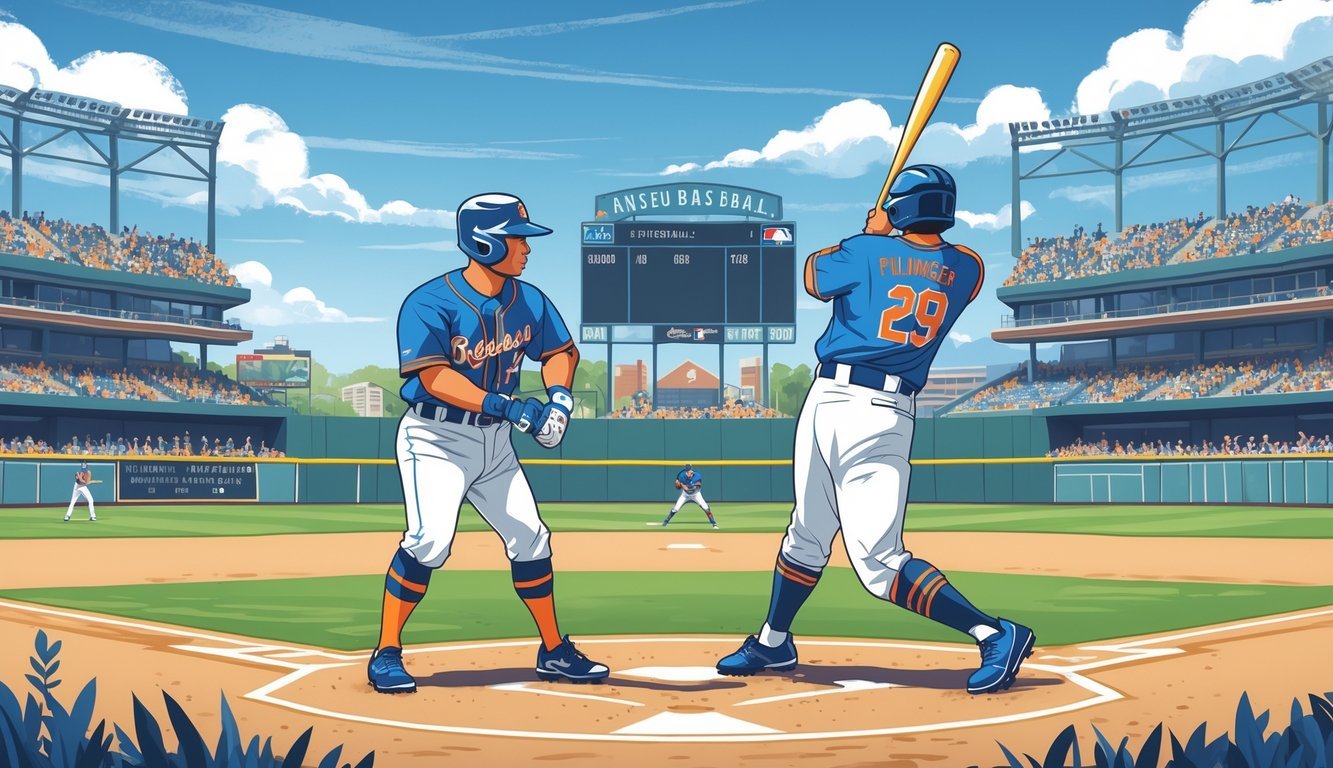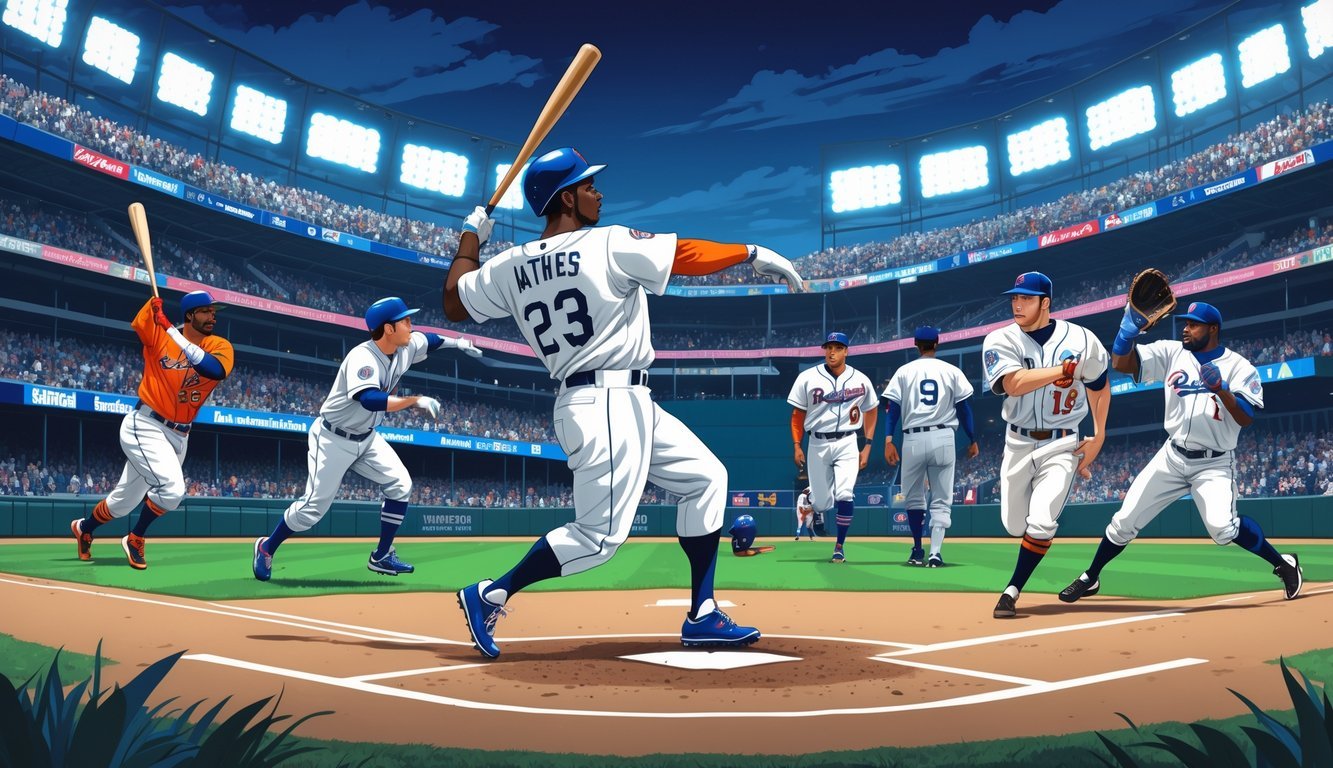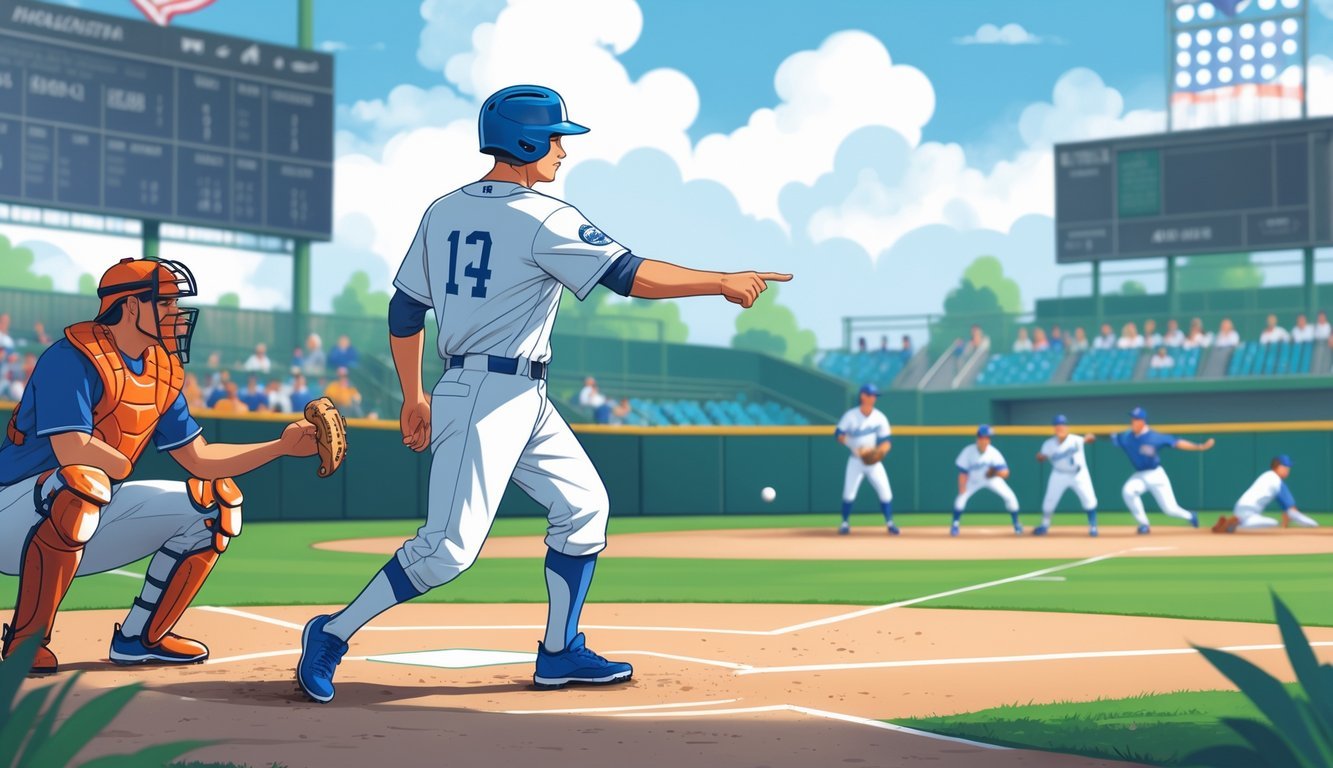PsychNewsDaily Publishers
100 Summit Drive
Burlington, MA, 01803
Telephone: (320) 349-2484
PsychNewsDaily Publishers
100 Summit Drive
Burlington, MA, 01803
Telephone: (320) 349-2484
A designated hitter (DH) bats instead of the pitcher, primarily in Major League Baseball's American League, enhancing team offense and preserving pitcher health.

A designated hitter, or DH, is a player who bats instead of the pitcher. So, the pitcher skips batting, and the team puts a stronger hitter in that spot.
The pitcher still takes the mound and plays defense, but you won’t see them step up to bat.

You’ll mostly spot this rule in Major League Baseball’s American League. Teams use it to score more runs since, let’s be real, most pitchers just aren’t great at hitting.
The DH only focuses on batting, which can make games a bit more thrilling for fans. If you’re trying to follow the game, knowing about the designated hitter helps you understand why some teams use this rule and others don’t.
It’s a simple rule, but it really changes how teams play baseball.

Let’s break down what a designated hitter (DH) actually does, why this rule showed up in the first place, and how it changes the way teams play.
The DH impacts who gets to bat, how teams plan their lineups, and even what players get to do on the field.
A designated hitter bats instead of the pitcher. Most pitchers focus on throwing strikes, not swinging for the fences.
By using a DH, your team can slot in a better hitter and keep the pitcher off the batting lineup.
The DH only hits and never takes a spot in the field. This keeps pitchers fresher and helps avoid injuries.
Major League Baseball made the DH official under rule 5.11. The American League started using it first, but now it’s more widespread with the universal DH rule.
This rule lets teams have a stronger offense since they don’t rely on pitchers to hit well. It also means you can have a player who just focuses on hitting.
The American League kicked off the designated hitter rule in 1973 to boost offense and make games more exciting. The National League didn’t jump on board until much later.
Both leagues used the DH during the 2020 season because of Covid-19 and health protocols. Then, in 2022, MLB officially made the universal DH part of its collective bargaining agreement with the MLB Players Association.
Before that, National League pitchers had to bat, so teams often used pinch-hitters or pinch-runners. Now, managers don’t have to swap out pitchers just to get a better hitter up, which keeps starters in the game longer and changes in-game decisions.
With a DH, teams can add a full-time hitter to the lineup without touching the defense. This changes how managers build their batting order and pick players.
Some managers use the DH spot for injury-prone or older players who still have a good bat. Since the DH doesn’t field, it’s a way to keep those players in the game.
Managers don’t need to use pinch-hitters or pinch-runners as often for the pitcher’s spot. Two-way players, who pitch and hit, are rare now, but they do give managers some interesting options.
The DH rule helps keep games moving and pitchers healthier. It also changes how teams handle pitching changes and set their offensive goals.

Some of baseball’s most famous players made their mark as designated hitters. These guys helped shape the role and showed just how much a DH can boost a team’s offense.
Their careers really highlight what it means to be a DH and why the position matters.
Ron Blomberg became the first official designated hitter in Major League Baseball back in 1973. He basically launched the DH era.
Edgar Martinez is often called the best DH ever. MLB even named the award for best designated hitter after him.
Paul Molitor and Harold Baines, both Hall of Famers, also left a big mark as DHs. Baines played more than half his games in the DH spot, proving this role can really extend a career.
These pioneers showed that DHs could be key hitters and not just fill-ins for weak bats.
The Boston Red Sox, with stars like David Ortiz, made the DH role famous. Ortiz helped the Red Sox win a bunch of World Series titles and became a fan favorite for his clutch hitting.
The DH rule started in the American League, but now both leagues use it thanks to recent changes like the “Ohtani rule.”
You’ll spot DHs in other leagues too, like Japan’s Pacific and Central Leagues and the Mexican League. Some teams even use pinch hitters as part of their DH strategy.
The DH role grew from just protecting pitchers to being a big part of team strategy.
Players like Nelson Cruz still carry on the DH tradition with their power hitting. Shohei Ohtani is a rare case—he pitches and hits, breaking the usual DH mold with the “Ohtani rule” that lets him do both.
Teams often use younger hitters or veterans in the DH spot. This gives pitchers a break and can really boost a team’s offense.
Even in minor league baseball, some leagues use the DH rule so power hitters can focus on batting.

A designated hitter bats instead of the pitcher, but there are some rules about how and when teams can use one.
You’ll also see how the DH works in different leagues, and how it’s not the same as a pinch hitter.
The designated hitter (DH) bats in place of the pitcher. So, the pitcher skips batting. The DH only hits and doesn’t play defense.
The American League has used the DH rule for years. The National League started using it full-time in 2022, so now both leagues use it.
Yes, there is. A DH gets assigned before the game and only bats for the pitcher. A pinch hitter just fills in for another player’s turn to bat during the game.
Yes, DHs can run the bases after hitting the ball. Once they’re on base, they can steal, run, and score just like any other hitter.
Players like David Ortiz, Edgar Martinez, and Harold Baines stand out as great DHs. They helped their teams with strong hitting, even though they didn’t play defense.
Yes, a designated hitter has won the MVP award before.
David Ortiz and a few other DHs have managed to earn that honor. Being a DH doesn’t actually prevent a player from getting top recognition.